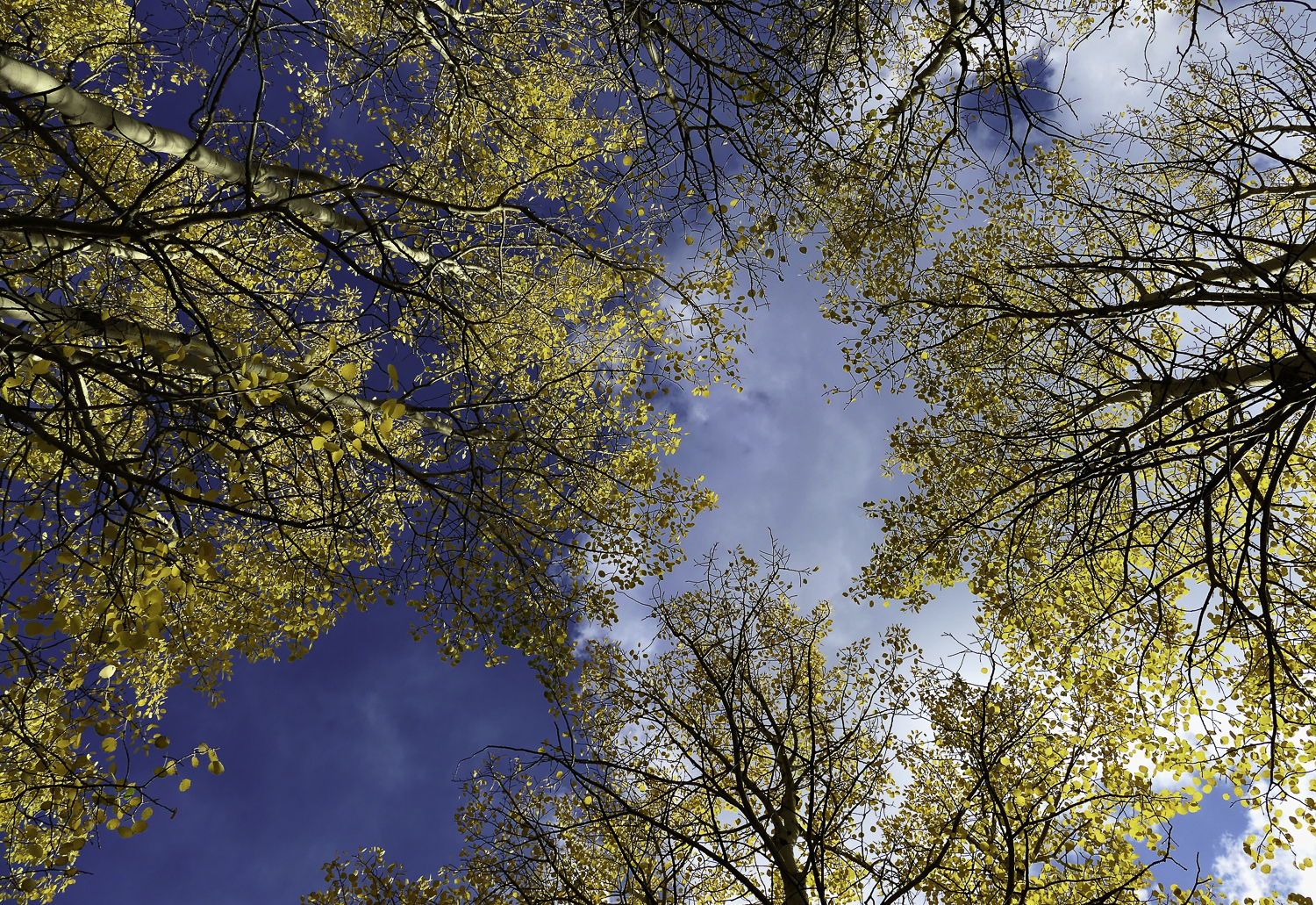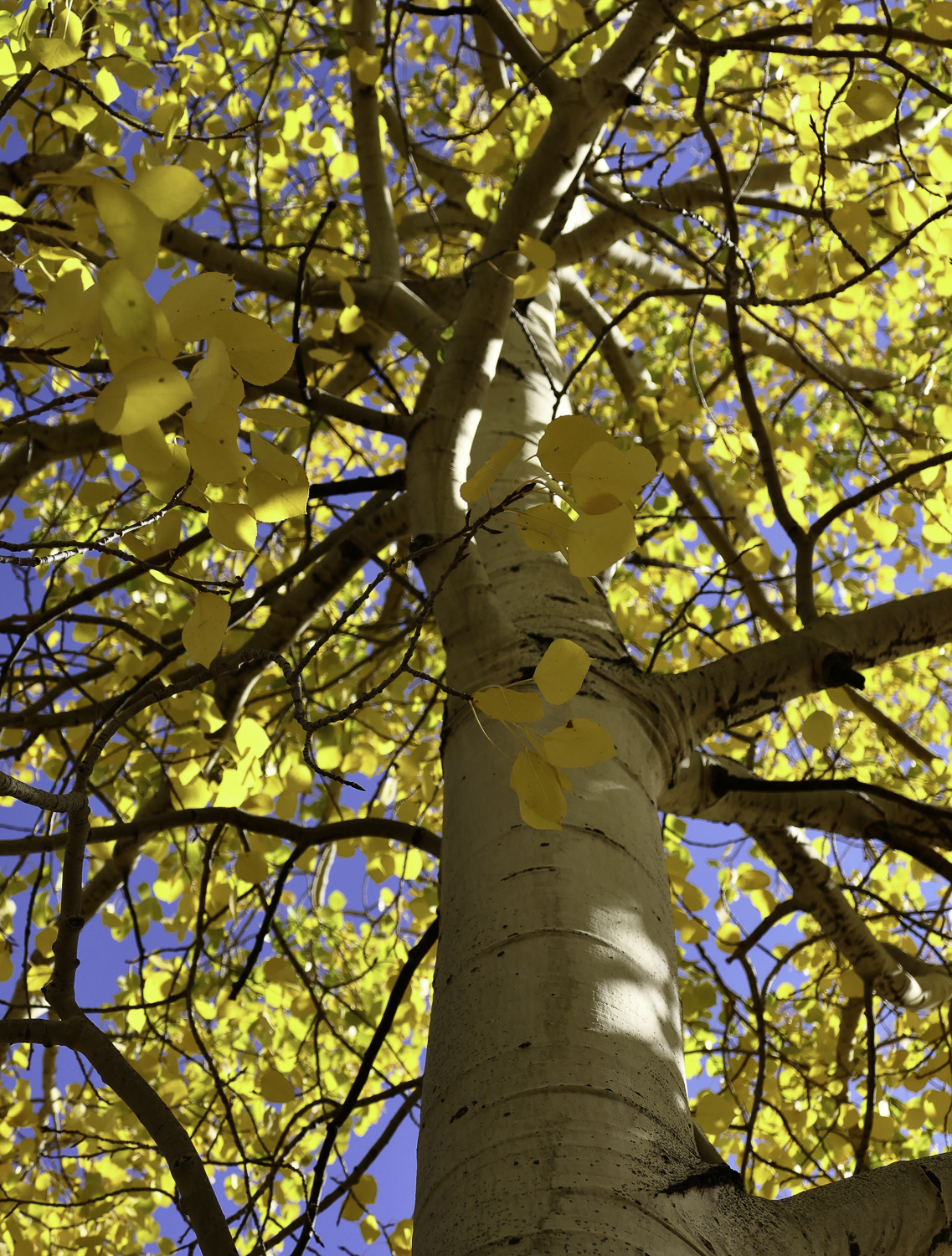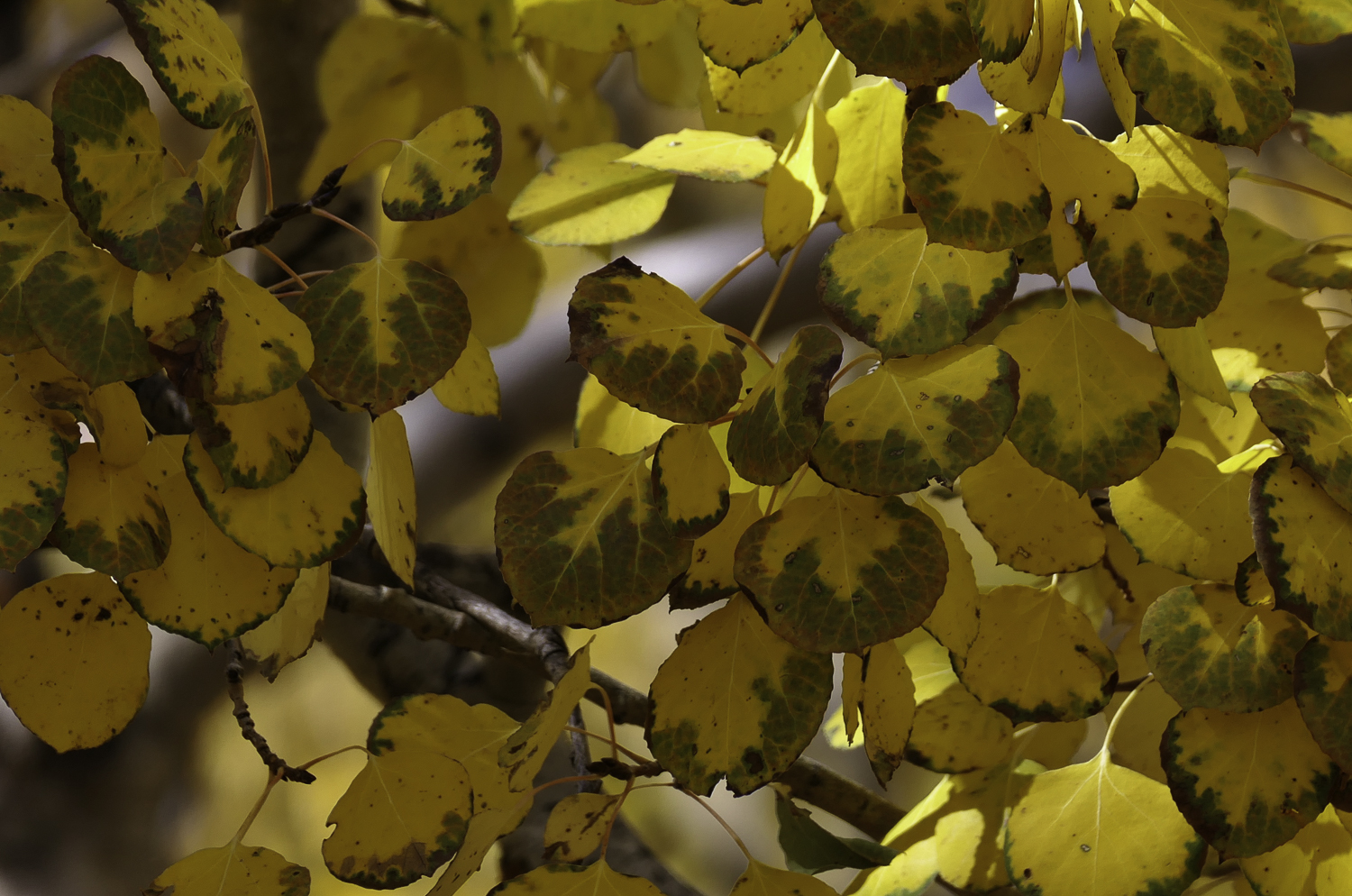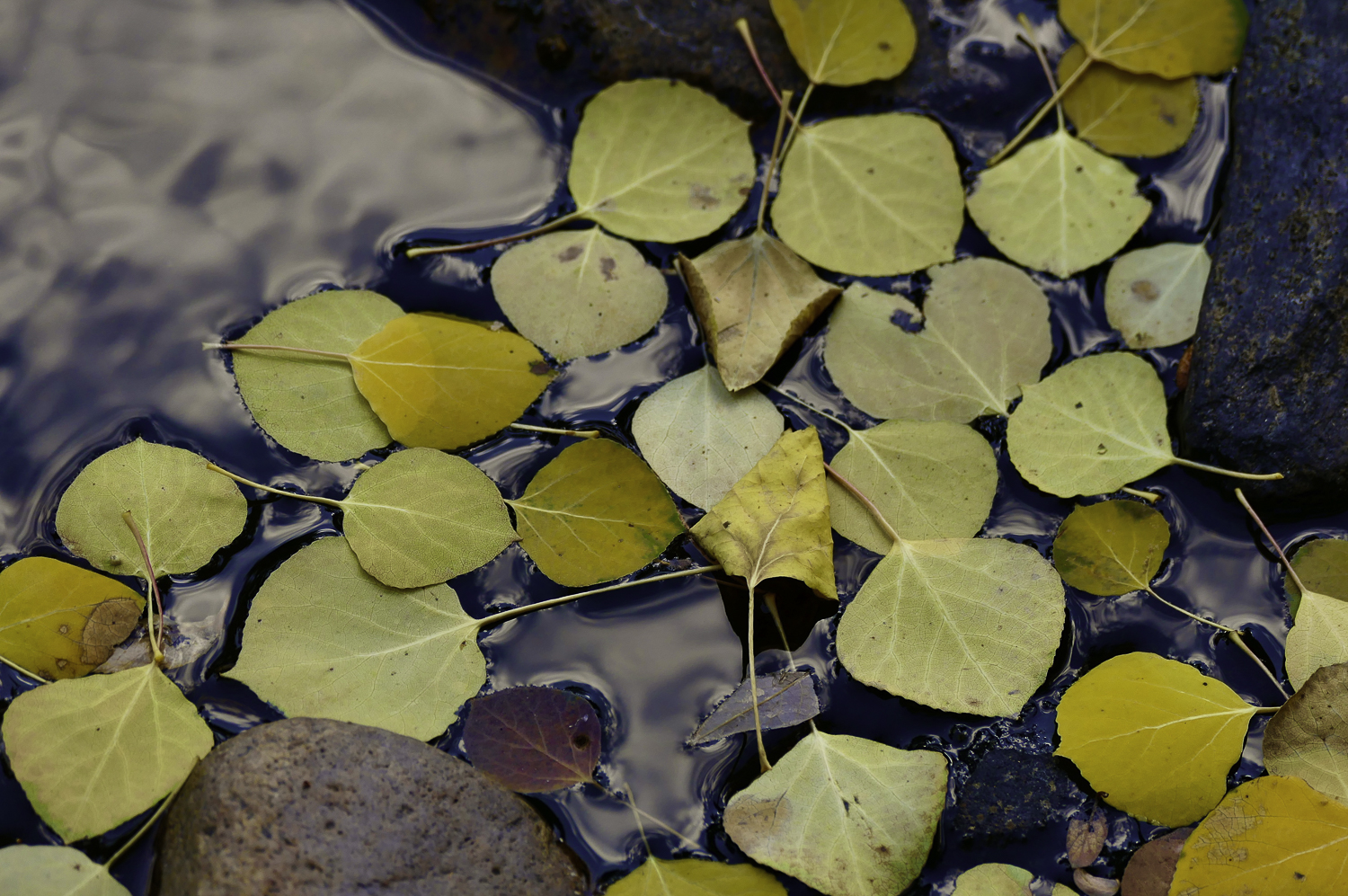ePostcard #111: Aspen Leaf Dance
ePostcard #111: Leaf Dance
Introduction: Before returning to our exploration of Tierra del Fuego, I want to step back to September and celebrate my home landscape in Colorado and the golden autumn that preceded our immersion in smoke and loss. These aspen photos are mine and the text excerpts are from my 2008 essay on the natural history of aspen, entitled Leaf Dance, which I wrote for Linde Waidhofer’s and Lito Tejada-Flores’ magnificent book—Forests of Light: The Romance of Rocky Mountain Aspens (2008). The excerpts I’ve chosen are about leaf color change in aspen. All of Linde Waidhofer’s photographic art books are spectacular and I suggest you look at the entire collection of their books, which are available in both hardcover and as eBooks, at their website: www.WesternEye.com. Credit: FORESTS OF LIGHT (2008, Western Eye Press; all photographs ©2008 Linde Waidhofer texts ©2008 by Lito Tejada-Flores and Audrey Benedict respectively).
LEAF DANCE: ASPEN FORESTS OF THE ROCKIES (Audrey DeLella Benedict)
ASPENS IN THE WEST, the delicate, sparkling green leaves of spring, the matte-green leaves of summer, the golden blazons of autumn, and the leafless, silver-gray trees of winter, mark the passing of the seasons more dramatically than any calendar. In the amber light of late afternoon, I climb a ridge so that I can look down on a “river” of quaking aspen. From my aerie-like perch, the leaves appear impossibly luminous—miniature lanterns powered by distilled sunshine. A puff of wind riffles through the branches, sending a meteor shower of leaves to pattern the forest floor with Spanish dubloons. For the last forty-seven years, I’ve lived at the edge of an aspen grove in the mountains of Colorado and have listened to countless, leaf-whispered stories of adaptation and survival—the beauty, complexity, and continuing mystery of aspen never ceasing to amaze me.
With September’s arrival, the vibrant green of summer aspen dissolves in a blaze of golden light. Green is the color of photosynthesis—the sun-powered plant engine that drives all life on earth. Chlorophyll, the green pigment that gives plants their green color, is encapsulated in minute sacs, called chloroplasts, that are located in the cells of leaf and stem tissues. Chlorophyll absorbs light energy from the sun and then transfers it to reaction centers in the chloroplasts. The chloroplasts then transform water and carbon dioxide into high-energy carbohydrates such as sugars, starches, and cellulose. The chlorophyll in aspen bark allows the tree to photosynthesize almost year-round, even at temperatures below freezing—a distinct advantage when leaf carbohydrate production is severely reduced as a result of a late spring freeze or insect defoliation. The high-energy food produced by photosynthesis is stored in various ways, such as in swollen roots and stems, and is used to fuel growth.
During the spring and summer, aspen leaves serve as the primary factories for photosynthesis. In addition to chlorophyll, aspen leaves contain three pigments that, in differing gene-based combinations, produce the colors that define the chromatic amplitude of a Rocky Mountain autumn: the purest yellow is produced by the pigment xanthophyll, gold and orange hues come from carotene, and the rarer reds are the result of anthocyanin. These pigments are almost completely masked by chlorophyll during much of the year. The coloring process begins in late summer and early autumn when shorter days prompt the trees to stop food production and to begin withdrawing sap into their trunks and roots for the coming winter. The circulation to the leaves is cut off, the chlorophyll in the leaves breaks down, the green color disappears, and the vivid hues of the other pigments move to center stage.
Crisp, sunny days and cool nights when temperatures drop below 45°F (but not below freezing) are necessary to bring about the most spectacular displays of autumn color. These conditions inhibit the withdrawal of sugars from the leaf, a situation that favors the accumulation of pigments. If the weather is cloudy and rainy or if there is an early killing frost, the colors will not be as vibrant and the leaves may turn drab and sere. The color grows in intensity at the higher elevations first, spreading like a firestorm to burnish the foothills below. While all these changes are taking place, a hormone at the base of the aspen leaf is working to weaken the link between leaf and branch, producing a separation layer. Once this process is complete, the leaf will be ready to separate from the tree with the first fretting breeze. For those of us who love aspen, the time is bittersweet—the soft rustling of the leaves will soon be replaced by the sweet, tannin-rich perfume of aspen leaves gone to earth. The final dance of the leaves is over for another season.
click images to enlarge
click images to enlarge
To help build global awareness, we would appreciate it if you would share this post with your friends and colleagues. Please choose one of the options below which includes email and print! Thank you.






I’m enjoying these posts about Colorado! To my eyes, the anthocyanin was much more prominent this season than in years prior. I’m especially fond of aspens and their often prolific pleurotus mycorrhizal mates.
Audrey your skill in photography does justice to your magnificant apen meadows,
Colorado’s bright blue sky is a pefect background canvas for the bright gold and red of the quaking aspens.
Perfect choice for this moment in time with the threat of fires all around,
Beautiful pictures and commentary, Audrey –